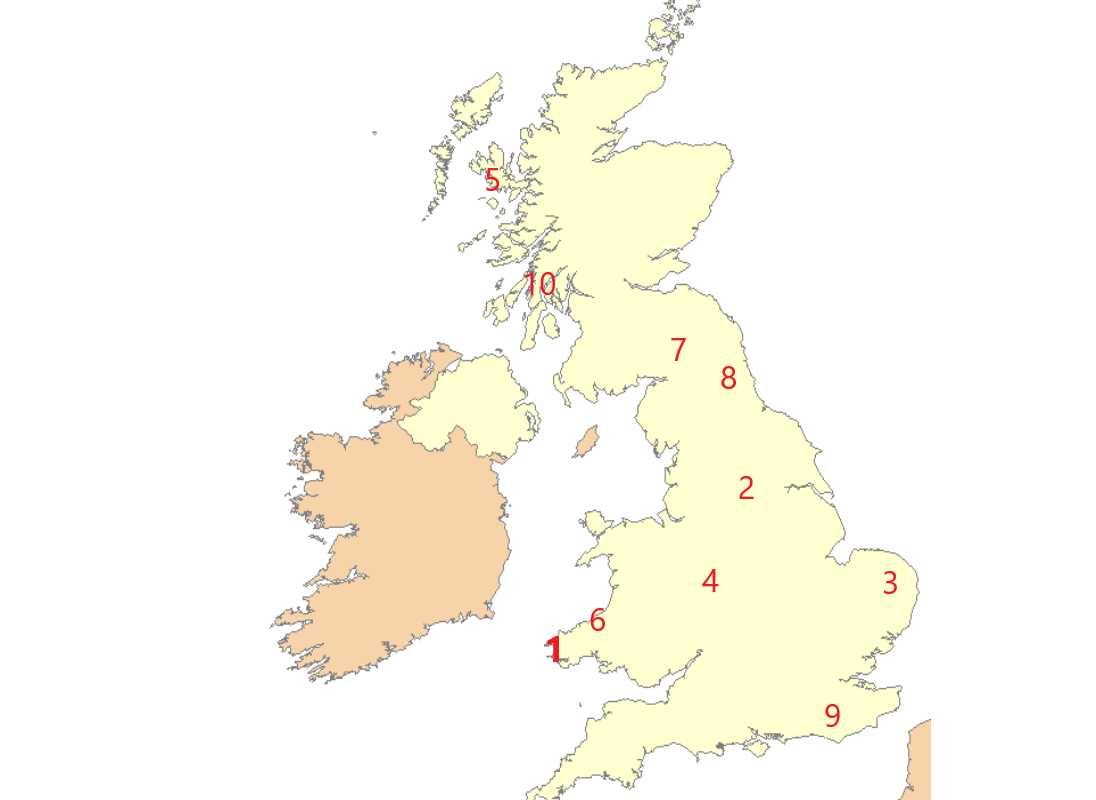
Place the British Dog Breed Trivia Quiz
Here are ten different British dog breeds originating from various areas of the UK. All you have to do is match the breed to the number on the map which denotes their place of origin.
A label quiz
by rossian.
Estimated time: 3 mins.
- Home
- »
- Quizzes
- »
- Animal Trivia
- »
- Dogs
- »
- Dog Breeds
